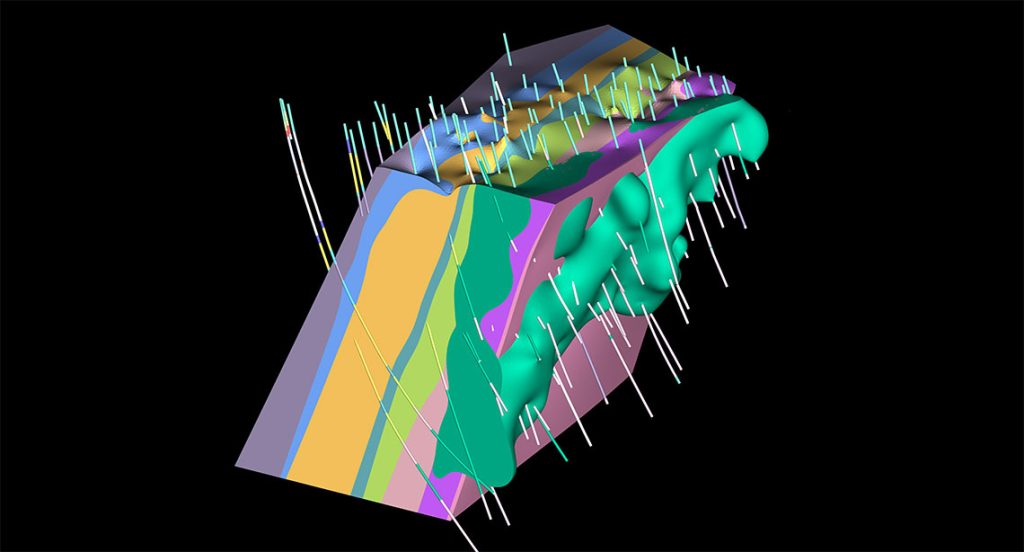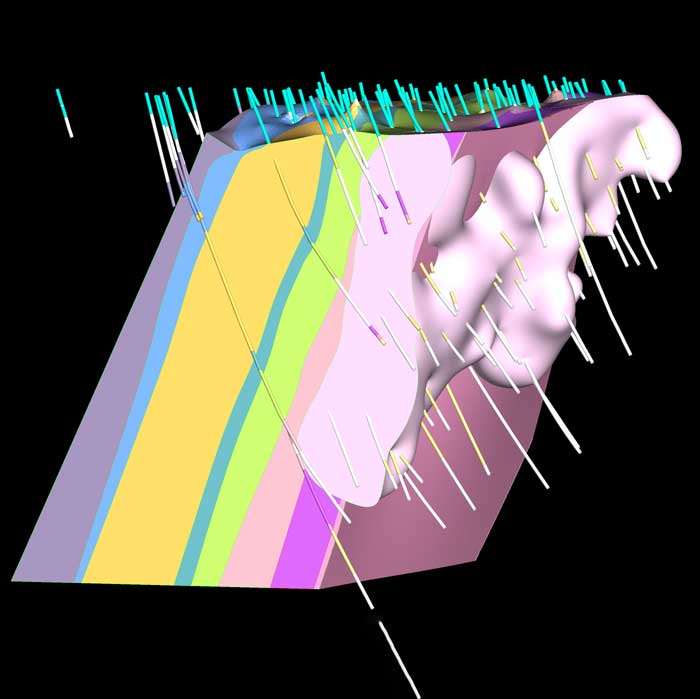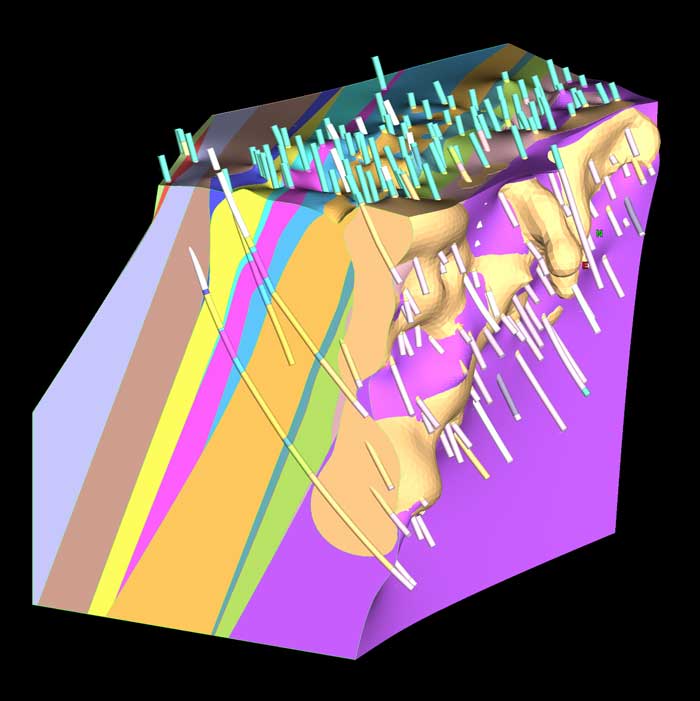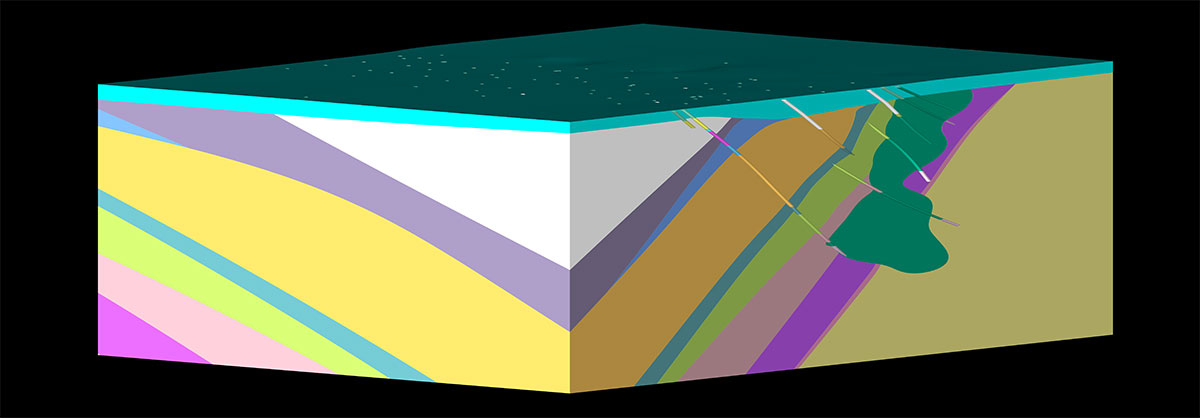June 2025 Issue Index
Enhanced implicit geological modelling
New surface modelling types, domain tools, and a global RBF engine elevate geological modelling in GeologyCore 2025.
Maptek GeologyCore 2025 marks a major step forward in geological modelling, allowing geologists to represent complex geology in a more natural, efficient and unified way. Users can now construct full geological models that integrate lithologies, intrusions, veins and stratigraphic units all within the same environment.

A key enabler of these new capabilities is the introduction of a global Radial Basis Function (RBF) engine. This advanced interpolation engine addresses modelling performance and quality, offering smoother, more geologically consistent surfaces. It removes the need for workarounds, allowing models to honour global data trends and deliver results that better reflect the real-world geology.
This opens the door to building more accurate and complete models—such as with new depositional and erosional surface types. These additions make it easier to model sedimentary and layered deposits, and to account for deformation and overprinting events that require nuanced representation.
Whether modelling stratigraphy, faulted veins, or post-intrusion events, GeologyCore 2025 provides the structure and flexibility in one place.
At the heart of the workflow is Domain Manager, which simplifies domaining of drillhole data. Users can define intervals using automated rules based on grades or lithology, or apply manual classification for more subjective interpretations. These domains feed into Modelling Manager, where users can sequence units chronologically, apply different surface generation methods, and tweak modelling settings to suit the geological history of the deposit.
One of the most appreciated aspects of GeologyCore is its modular, sandbox-style environment. Geologists can copy and adapt models to explore alternate interpretations without having to start over—ideal for testing assumptions or presenting multiple scenarios. This helps geologists work more like geologists, iterating and refining their thinking instead of wrestling with rigid workflows.
The Maptek commitment to integration continues with GeologyCore 2025. Vulcan users can open design databases, drag-and-drop CAD data, and export geology models or drillholes directly to Vulcan or generic formats using the new ‘Publish Model’ feature. It’s an efficient way to share geological context downstream into planning and estimation.


Users of the DomainMCF add-on benefit from even tighter alignment between geology and machine learning. Structural trends and fault block solids created in GeologyCore can now be used directly in DomainMCF modelling. Customisable block sizes make it easier to match DomainMCF outputs with block models used in resource estimation.
For production geologists, usability improvements and dynamic filtering tools make a difference. GeologyCore supports fast review and labelling of key intervals—such as high-grade zones—based on cutoffs or custom filters. This ensures insights can be prompted quickly, even by geologists juggling multiple responsibilities.
Whether operating under a flexible daily licence or a longer-term subscription, users will find GeologyCore 2025 a reliable partner. It streamlines the modelling process and encourages geological thinking at every step.
Specialised tools for machine-learning assisted domain modelling, design conformance and geotechnical analysis can be added to the base licence.
GeologyCore 2025 provides more than new features—it’s about enabling better geology. With powerful tools and a more cohesive workflow, geologists now have everything they need to build models they can trust.
- GeologyCore 2025 offers a unified modelling environment for lithologies, intrusions, veins, and stratigraphic units, representing complex geology effectively
- The global Radial Basis Function (RBF) engine delivers smoother, geologically consistent surfaces by addressing modeling performance and quality
- Domain and Modelling Managers streamline drillhole data domaining and geological unit sequencing, offering a flexible sandbox environment

